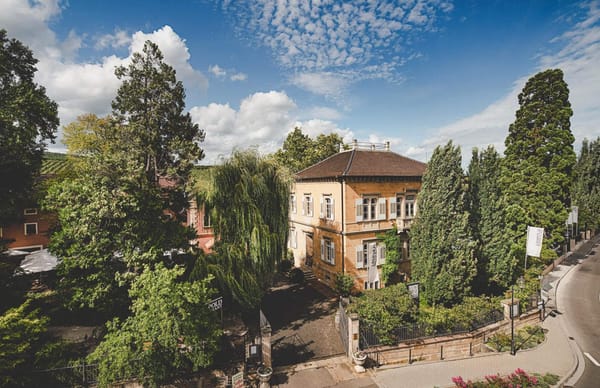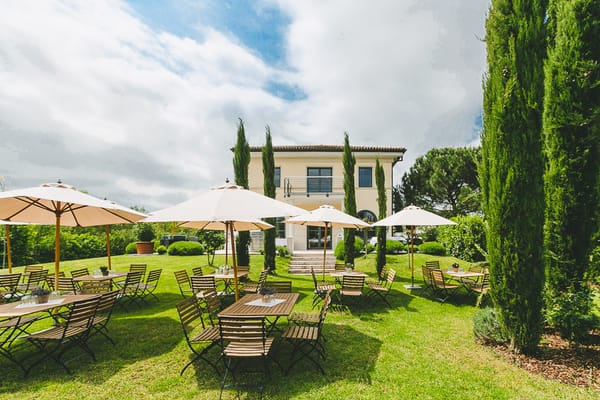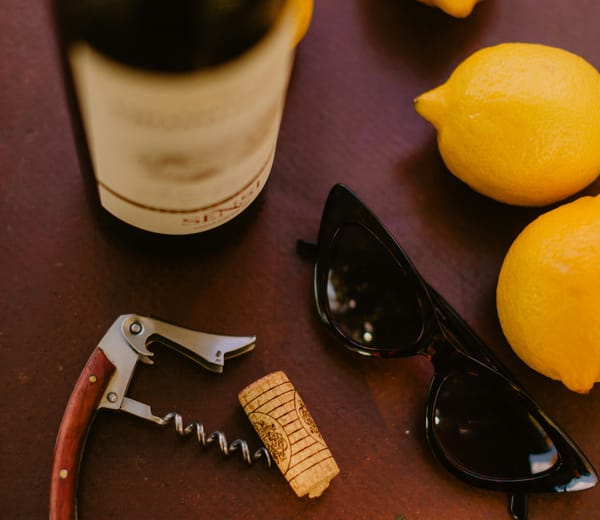Alcohol – The Warmth in the Wine 🔥🍷
The fire in the glass. Learn how alcohol transforms grape juice into wine—adding body, warmth, emotion, and something quietly unforgettable.

Welcome to the final chapter of our foundational series on the five key traits that shape how wine tastes and feels.
We’ve explored body, sweetness, acidity, and tannins - each one contributing its own character and complexity.
Now we arrive at the final element.
The one that connects everything.
The one that turns grape juice into wine.
Alcohol.
The heat, the heart, and the hidden fire in every glass.
“Alcohol in wine is like a flame in a fireplace - it warms, it glows, it creates mood. But you have to know when to step back from the heat.”
— Tobi
Where It All Begins: Sugar, Fermentation & Transformation
Wine begins as grape juice. Sweet, rich in natural sugar, and full of potential.
But something magical happens during fermentation.
Yeast - either wild or added - consumes the grape sugar and converts it into:
- Ethanol (alcohol)
- Carbon dioxide (which mostly escapes)
This is where alcohol is born, and with it, wine as we know it.
The rule is simple:
More sugar = more potential alcohol.
So if grapes are left to ripen longer (as is more common today due to climate change and selective harvesting), they accumulate more sugar - and that leads to higher alcohol in the finished wine.
This is especially true in red wines, where fuller ripeness is often desired for richness, fruit depth, and mouthfeel.
Alcohol & Sweetness – A Delicate Balance
Here’s where we reconnect with sweetness:
If fermentation is stopped before all the sugar is converted, we’re left with residual sugar (RS) - the foundation of off-dry, semi-sweet, or sweet wines.
But even fully fermented dry wines can taste sweet if alcohol is high. That’s because alcohol increases the perception of sweetness, and another compound called glycerin contributes a silky, round texture and subtle sweetness known as “Extraktsüße”.
This is why you may detect a hint of richness or sweetness in a bold Amarone or Shiraz, even if no sugar remains.
The Three Alcohols in Wine
Wine contains not one but three alcohols, each playing a different role:
- Ethanol (Ethyl Alcohol) - The main alcohol, responsible for the warming, euphoric effect. It also lifts aroma and body.
- Methanol - Toxic in high amounts, but in wine it’s present in harmless trace amounts (0.1%).
- Glycerin (Glycerol) - Colorless, thick, and slightly sweet. Adds a velvety mouthfeel and mimics sweetness in dry wines. The “legs” on your wine glass? Mostly alcohol and glycerin.
Alcohol’s Influence – Texture, Flavor, Heat
Alcohol shapes wine in a multitude of ways:
- Adds body and roundness
- Enhances fruit and sweetness perception
- Carries aromatic compounds to your nose
- Produces warmth and length in the finish
- Can create bitterness or "hotness" if unbalanced
A low-alcohol Riesling might dance on the tongue.
A 15% Syrah might feel like a velvet hammer.
It’s all about how it’s woven into the wine’s fabric.
The Spectrum – How Alcohol Feels
| Alcohol Level | ABV Range | Description | Sensory Notes |
|---|---|---|---|
| 1 – Low | 5–10% | Light, refreshing | Crisp, zesty, no heat |
| 2 – Medium | 10–11.5% | Delicate warmth | Soft, supple, gently rounded |
| 3 – Balanced | 11.5–13.5% | Classic table wines | Structured, smooth, well-integrated |
| 4 – Bold | 13.5–15% | Rich, warming | Full, lush, slightly sweet |
| 5 – High | 15%+ | Intense, powerful | Fiery, spicy, lingering warmth |
Alcohol and Calories – Energy in the Glass
Alcohol isn’t just warmth - it’s also fuel.
It contains 7 kcal per gram, making it more energy-dense than carbs or protein. That’s why wine, especially higher-alcohol or sweet wine, can contribute significantly to your daily intake.
Here’s a quick comparison per 0.75 L bottle:
| ABV (%) | Alcohol (g) | Calories | Example Wines |
|---|---|---|---|
| 10% | 60 g | ~420 kcal | Light Riesling, Vinho Verde |
| 12% | 72 g | ~504 kcal | Pinot Grigio, Riesling trocken |
| 14% | 84 g | ~588 kcal | Bordeaux, Burgundy, Spätburgunder |
| 15% | 90 g | ~630 kcal | Amarone, Zinfandel, Fino Sherry |
Note: Sweet wines and sparkling wines with dosage add even more calories from residual sugar.
Health, Risk & Responsibility
Let’s be honest: alcohol is a psychoactive substance. It affects the brain, liver, metabolism, and mood.
While it’s central to wine culture, it’s also something to handle with care and respect.
Some important truths:
- Alcohol is processed by the liver, converted into acetaldehyde (a known toxin).
- People metabolize it differently - women and people of Asian/Indigenous heritage often process alcohol more slowly.
- Alcohol can disrupt sleep, dehydrate, and affect blood pressure and heart rhythm.
- WHO no longer recommends daily alcohol for “health.” The message is: less is better.
What Is Moderate Consumption?
Physicians agree: moderation is key.
| Group | Daily Guideline | Approximate Equivalent |
|---|---|---|
| Men | max 20g ethanol | ~1.5 glasses of 13% ABV wine (300ml) |
| Women | max 12g ethanol | ~1 glass of 13% ABV wine (200ml) |
If you’re drinking wine:
- Do so with food
- Stay hydrated
- Know your limits
- Never use wine to numb what should be felt
Wine is a companion, not a solution.
Tobi’s Tip: Feel the Balance
If there’s one thing I’ve learned from this journey - it’s this:
Alcohol is not about the number on the label.
It’s about how it feels in balance with everything else:
- The body of the wine
- Its acidity and freshness
- Its tannins and structure
- The lingering sweetness (real or perceived)
When everything is in harmony, alcohol becomes the warm echo that holds it all together.
🎶 Wine & Music Moment
There’s one song that comes to mind when I think about alcohol’s heat, tension, and tenderness:
🎵 Wicked Game – Chris Isaak
It’s a slow burn. Smoky, seductive, but strangely sad. It doesn't hit you all at once - it unfolds.
That’s how a good high-alcohol wine should feel.
Bold, but never brash. Smooth, but not flat. Spicy, but still in control.
Pour a glass of:
- Aglianico
- Zinfandel
- Southern Rhône GSM blend
And just… let it build.
Final Thoughts – From Sugar to Fire
We started with grape sugar, and here we are - sipping on the warmth it became.
Alcohol connects all the other traits we’ve explored:
- It gives body its weight
- Enhances sweetness
- Balances acidity
- Softens tannins
It’s the final transformation in wine’s long and beautiful story.
What alcohol level do you love in a wine?
Are you into big reds that warm the soul - or delicate whites that barely whisper?
Let’s talk about it. Let’s spill it.
Stay warm. Stay aware. Stay curious.
– Tobi 🍷




